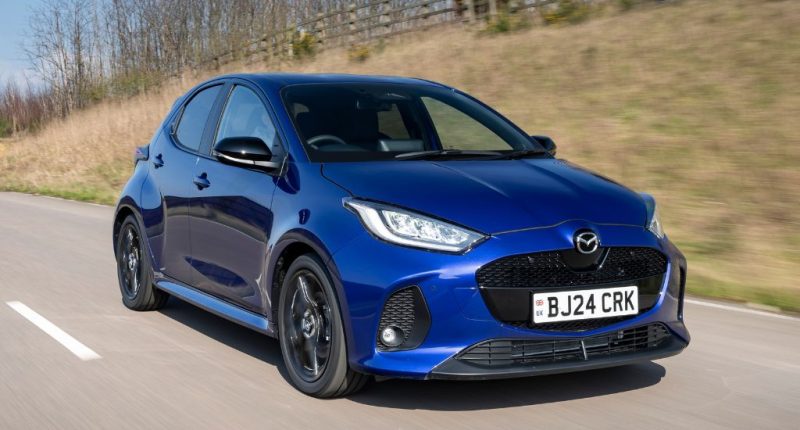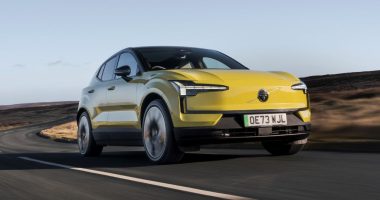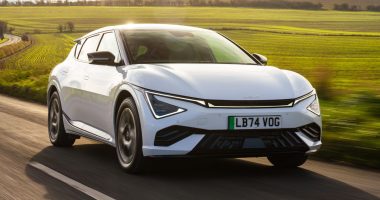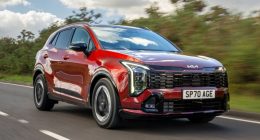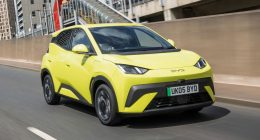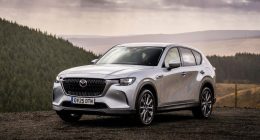If you are experiencing Déjà vu seeing this new 2 Hybrid, you are not alone – and for good reason. In a nutshell this is a Toyota Yaris, albeit with Mazda’s famed winged badge stuck on the car’s nose and tail.
Sold alongside the ageing pure petrol-powered Mazda-engineered 2, the 2 Hybrid is the by-product of the Japanese companies’ “long-standing collaboration”. Signed in 2015 with the aim of delivering more “appealing cars that meet the diverse needs and tastes of customers all over the world”, it has allowed the auto giants to remain true to their roots whilst fast-tracking the introduction of new technologies. Some may argue re-badging exercises are lazy and make little to no sense – but they are nothing new.
With profit margins on city cars as slim as they ever were – as demonstrated by the loss of Volkswagen’s up! and Ford’s Fiesta – it makes financial sense for Mazda to want maximum buck for minimum effort.
By and large, designers are restricted to what they can change and with the 2 Hybrid a Mazda-specific grille, bespoke wheels measuring 15- or 16-inches depending on trim, and a body-coloured strip that bridges the gap between the rear lights instead of the Yaris’s gloss black panel are the primary tweaks.
Buyers have a choice of four models priced from £24,130 for entry-level ‘Centre-Line’ rising to £29,230 for posh ‘Homura Plus’. Go all out and this secures a 12.3-inch customisable digital driver display, a head-up driver display and a grander 10.5-inch central touchscreen with satellite navigation.
Putting this to one side, each model comes well equipped, but the expectation is most buyers are set to skip the most affordable 2 Hybrid and begin their search with ‘Exclusive-Line’, as featured here. They bring folding mirrors, Blind Spot Monitoring, Road Sign Assist, Lane Trace Assist, front and rear parking sensors, reversing camera, and wireless Apple/Android functionality for the new 9-inch touchscreen.
One engine and transmission powers the range, with the marmite CVT automatic sending all 114bhp from the Yaris-derived 1.5-litre, three-cylinder petrol to the front axle. Gear changes are smooth and around town, it is possible to complete a fair chunk of your journey on the 59kW e-motor that gets its energy from the onboard battery.
The cells are topped up either as the ICE is running or through regenerative braking, and once they are adequately replenished you can reach for the ‘EV’ button on the lower console and engage zero emissions motoring. Otherwise, you can just leave it in automatic and allow the system to do its own thing.
In urban settings the petrol-electric set-up delivers nippy acceleration, brisk performance, and serene levels of quiet. A compact footprint and light steering further make it well-suited for city settings, and while the 2 Hybrid can hold its own on A-roads, dual carriageways and motorways, total decibel levels increase as you accelerate. The offending party here is the smooth and otherwise responsive Continuously Variable Transmission (CVT).
That level of responsiveness also applies to the way the 2 Hybrid points and steers. A short axle does count against it as far as rear occupant space and boot capacity (286-litres) are concerned – but from a driving perspective it ticks a lot of boxes.
It more than holds its own on a twisty country road and remains composed and settled, even when challenged by potholes and other common road anomalies. It doesn’t have the all-round finesse of either the Renault Clio or Seat Ibiza, and is not as comfortable as Skoda’s Fabia, but it promises loads of smiles per mile compared to the more practical Honda Jazz.
This is experienced from inside a cabin that cries out for colour and personalisation – a cabin that has been Ctrl and C from the less expensive Yaris. Similar to what is on show on the outside, both cars are a mirror image on the inside.
However, being £1,000 more expensive than the car on which it is based, the 2 Hybrid struggles to justify the higher asking price due to the sheer volume of dull, drab, scratchy plastics.
Granted, it is functional with a decent number of storage options, the knobs and switches are logically presented, and everything is well glued and screwed together and should therefore stand the test of time. But for a manufacturer like Mazda, with its track record of creating inviting and appealing interiors, this ranks as a disappointment.
